
Flybubble Team Pilot Alistair Andrews shares the joys of paragliding in Nepal.
After a blinding flying season in 2015, although hopeful, I never expected 2016 to match it. Work was more intense, I spent some time overseas both flying and not, I got married and even lost my job towards the end of the season! I was lucky to do some enjoyable XC flying this year, but towards the end of August this ground to a halt as wedding prep kicked in.
I’ve been a Trainee Instructor for some time, and with a change of career on the cards, I was keen to spend as much spare time as possible training new pilots with the Joint Service school in Crickhowell. Due to overlapping overseas courses, I was very lucky to be offered a trip to Nepal to teach some Gurkhas to fly.
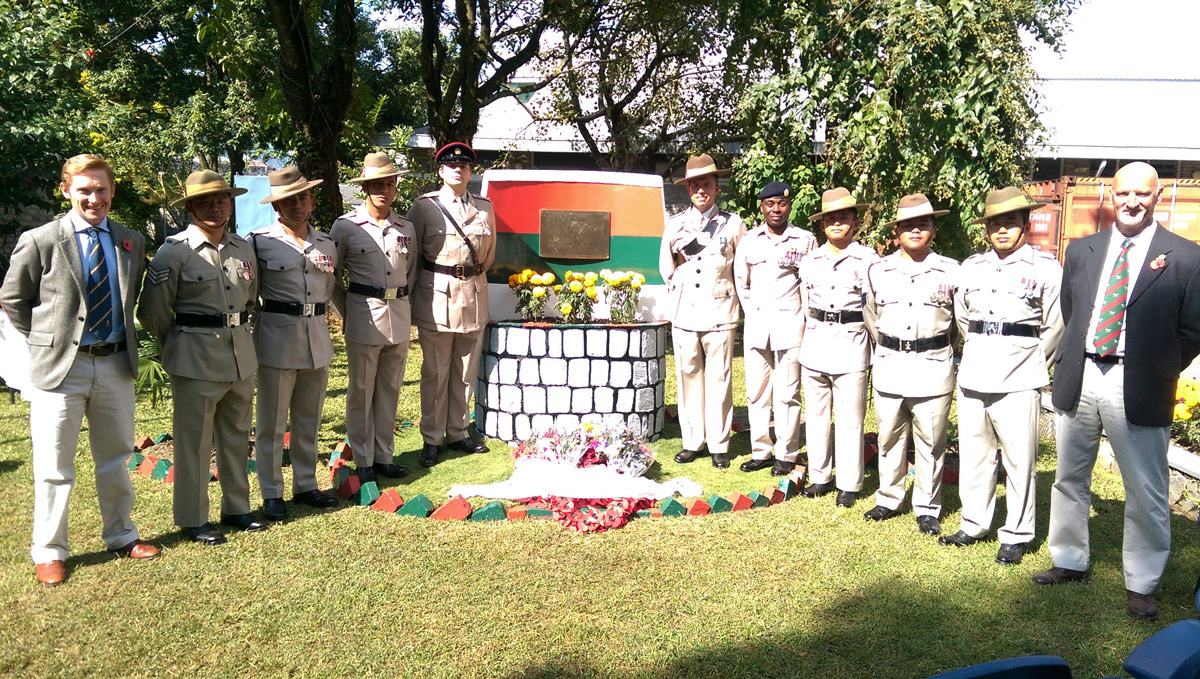
These guys have been serving in the British army for 200 years. They’ve worked all over the world, but the country having suffered a terrible earthquake in April 2015, they’ve also been working hard at home to rebuild villages, schools and houses for Gurkha pensioners over the past year. With tourism to the country having suffered recently, I wanted to grasp the opportunity to introduce something lighter to these incredible guys.
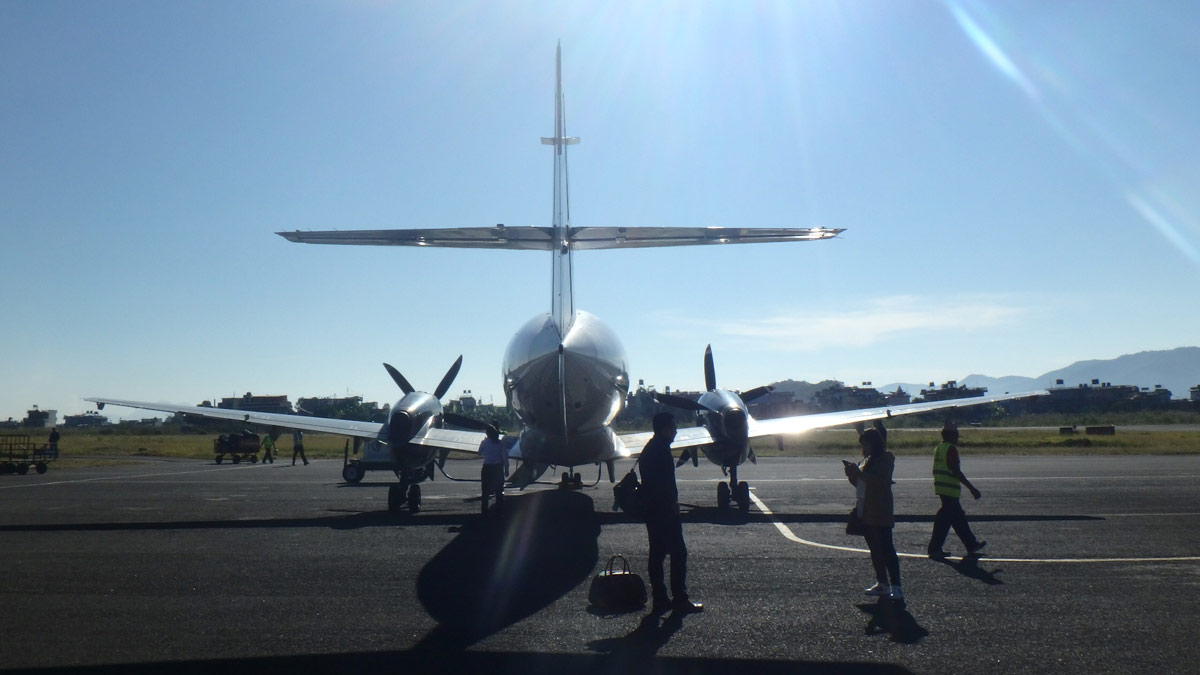
Pokhara is a short flight on a Jetstream from Kathmandu and once there, you really are in a mountain paradise. It’s amazingly close to the huge mountains of the Annapurna, with a great flying scene and beautiful lake with landing fields dotted along the bank. There happens to be a British Gurkha Camp in the city, so it was an ideal staging post for our training.
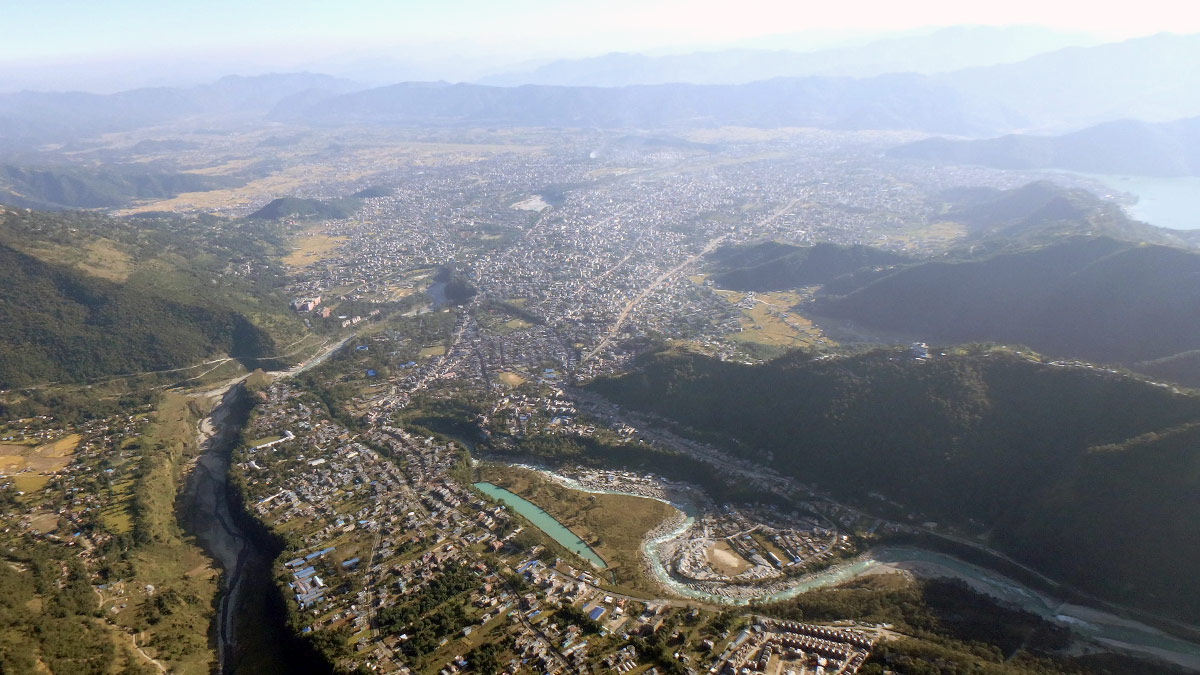
I arrived half way through the course, a friend having helped out on the EP training, so I waltzed in for the soaring and more interesting exercises half way through. The guys were great, most having signed up to do some Adventurous Training, rather than specifically wanting to learn to fly. They fitted the stereotype of brave, unquestioning of instructions and eager to perform at their best. We spent a glorious couple of weeks under bright blue skies flying from the local sites of Mandradunga, Toripani and spent a couple of days in the World Heritage Site of Bandipur. The guys even got to make their final flight after qualifying from the world famous Sarangkot take off.
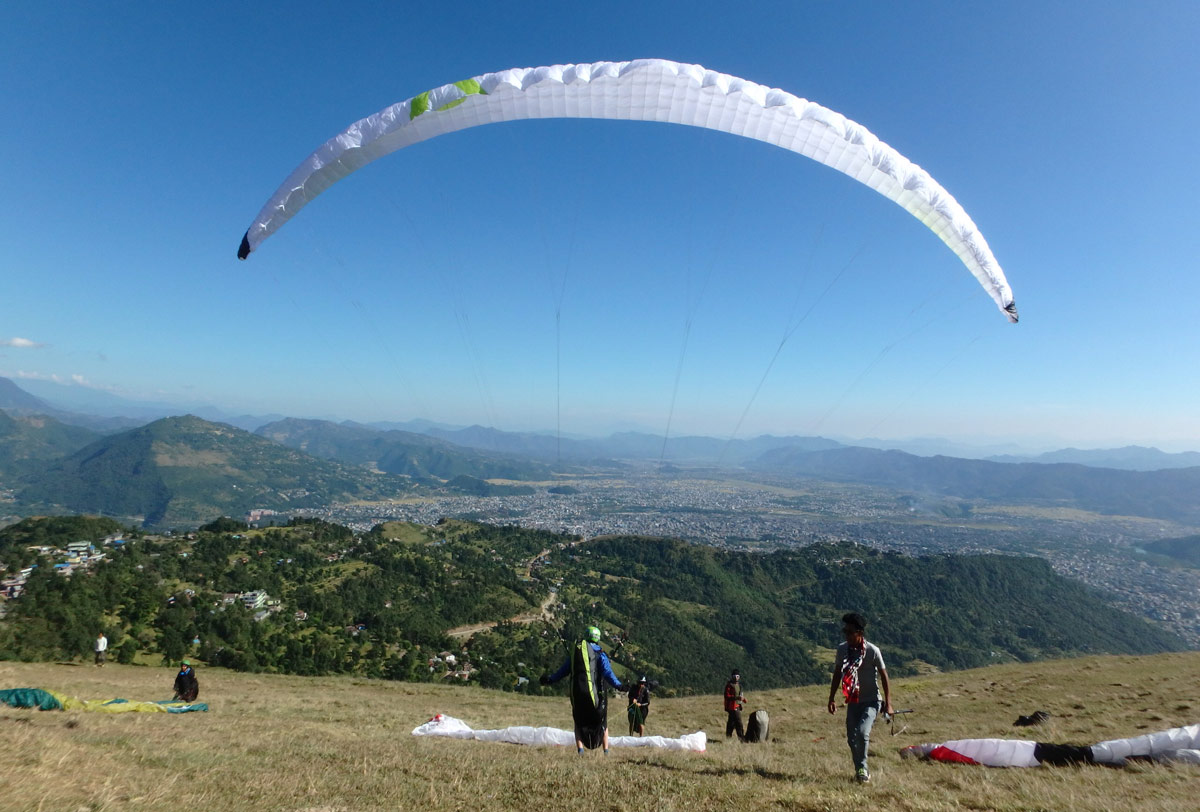
At time of writing, 6 of the 8 have joined the BHPA, so hopefully we’ve helped to continue to grow flying within the Army, and importantly qualify Nepalis who may go on to spread flying throughout the country and into some of the more remote areas.
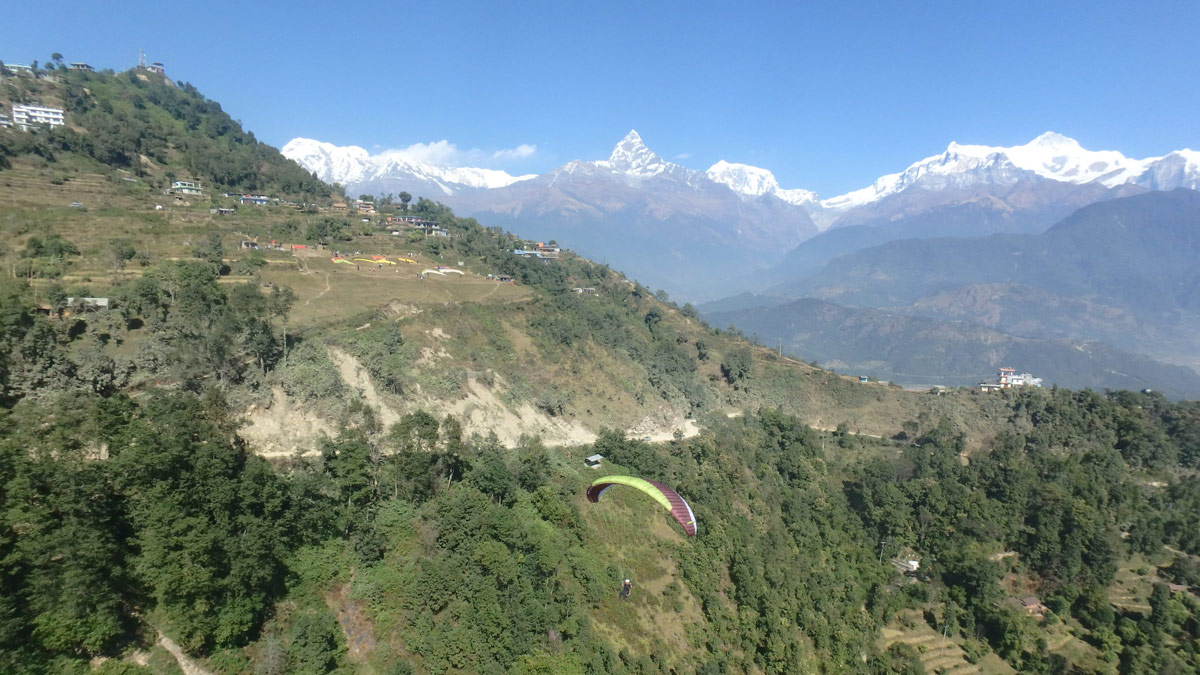
After the training, I was fortunate to be able to spend another 10 days free flying. One of the two British students is a keen mountaineer, and wanted to fly from the ridge that leads up to Mardi Himal, a 5500m peak in front of the iconic Fishtail mountain. Having a tandem at hand, and fancying getting away from the city for a couple of days, we went for it.
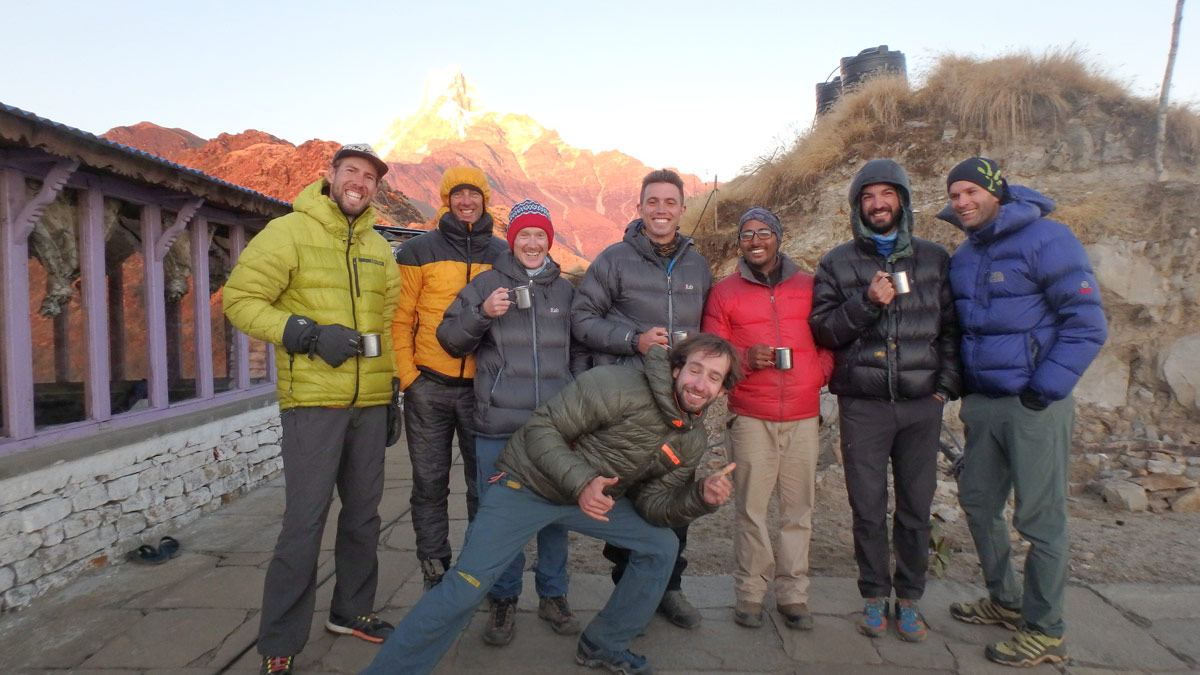
A 5am start had us at the start point for the trek at 8. It was about a 25 mile drive! I’d always thought of using porters as somewhat lazy and against our European, fast and light, tactics. I came to understand how employing three guys for a couple of days during a trek is a sound way to distribute wealth to rural areas, as well as making the day and a half hike somewhat less of a burden. If blessed with a translator, you also get to share some banter about the hills and share a glass a Raksi (an awful mountain moonshine)!
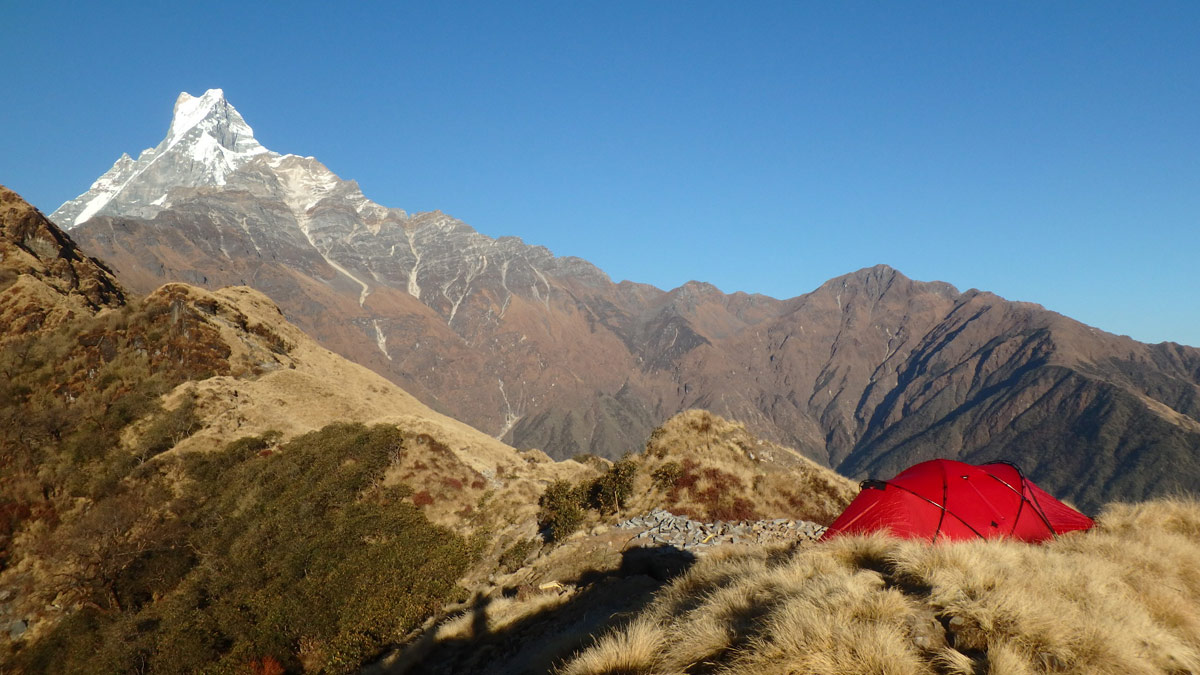
We had a super time on the mountain, with a great gang of local pilots, French tandem flyers and brilliant photographers. The Viewpoint of Mardi Himal has become the new 'go to' spot in the region for hike n fly as well as trying to get to high altitude.
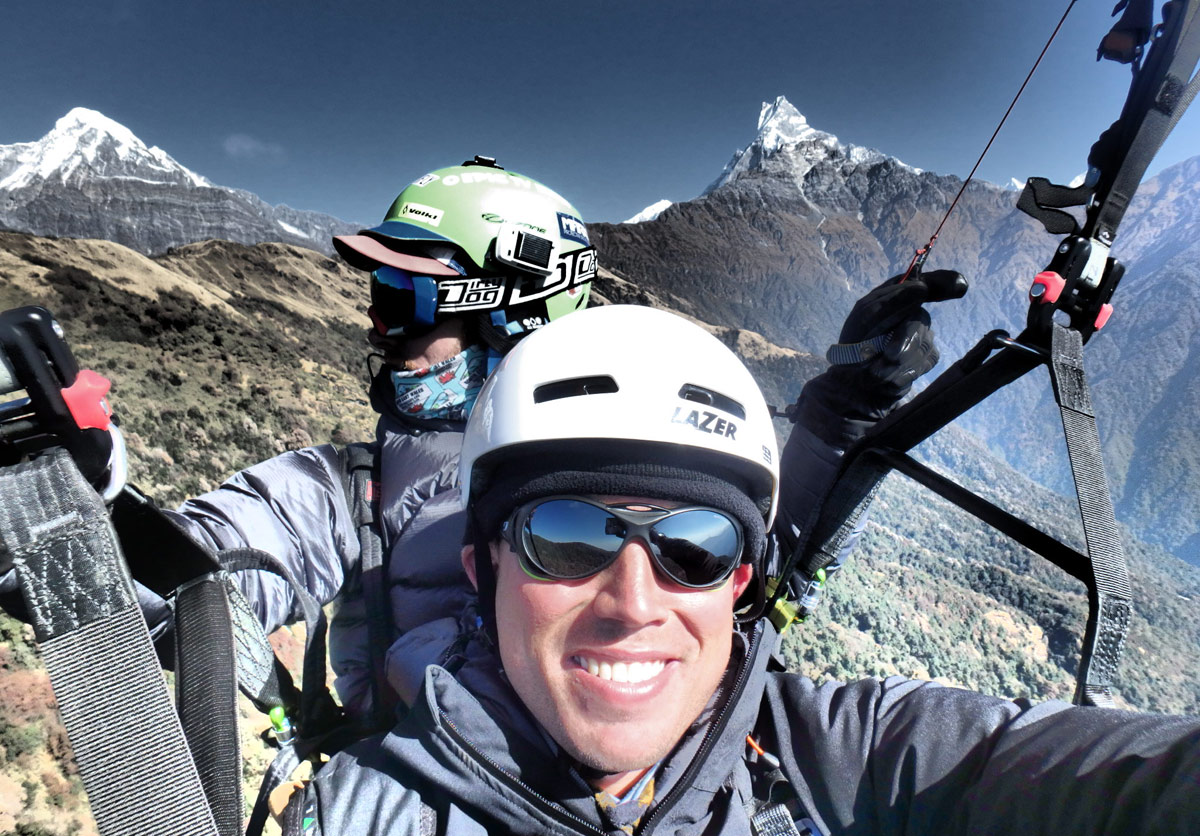
A few days after our morning fly down, a French team got to 6400m on tandem gliders! All a stone’s throw from Pokhara, and then a 30 minute straight flight back to the city. Also, amazingly, the porters made it back to the camp about an hour after we did. Us having flown most of the way back, before taking a jeep, the porters having run down and then used local transport!
Aside from this little adventure, I was able to fly XC for a few days. At this time of year, with relatively short days, a 40km triangle is quite achievable.
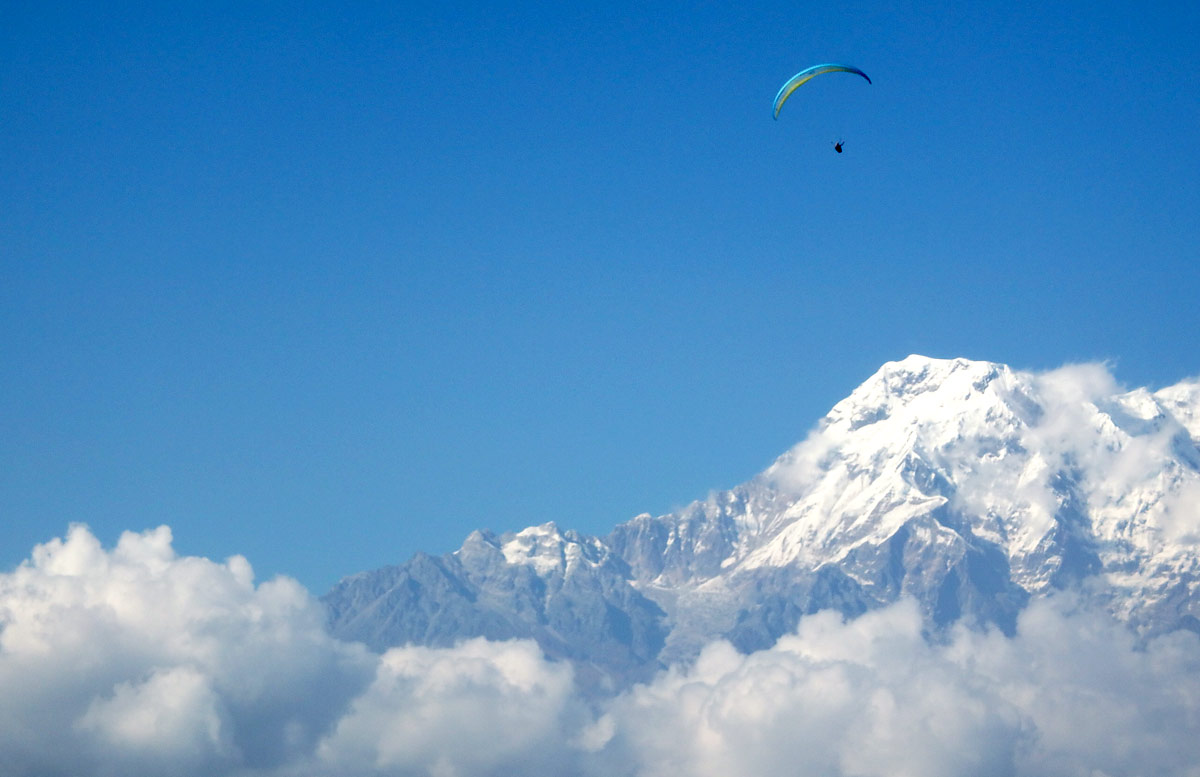
You’ll find yourself flying terrain of over 3000m and surrounded by a plethora of birds of prey, most of them huge, I can’t believe that such a small area can support such a range of species, in such vast numbers. Flying with these birds is a privilege. They’re obviously outstanding thermallers, and very generous – they’ll often lead out for you once you reach top of climb and accompany you XC!
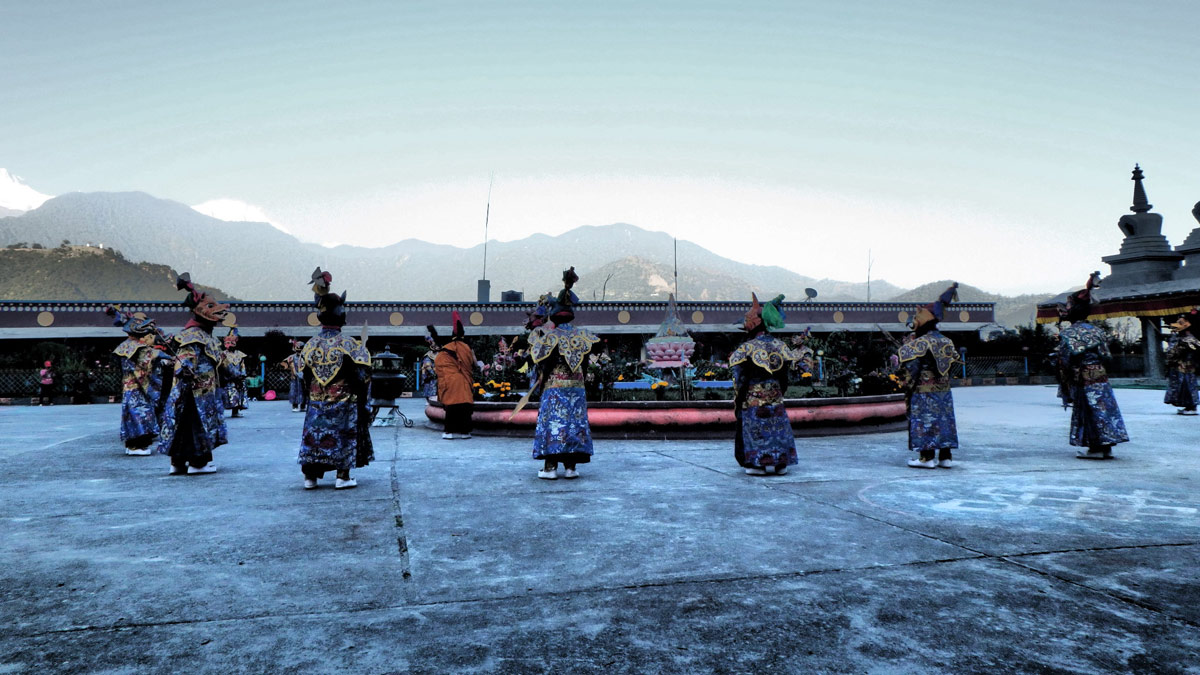
Pokhara was a lot quieter than I remember from my trip as a CP+10 some 8 years ago. The urban parts of the country have recovered incredibly well from the earthquake, but the businesses still need tourists for the country to recover financially, and there’s still a huge amount of work being done in the rural areas by NGOs from across the planet. If you haven’t planned a trip for 2017 yet, I’d highly recommend flying this spring or next autumn in Nepal. The flying is incredible, the history and culture are so special and the people are some of the friendliest you’ll ever meet. I’ve come back full of enthusiasm about flying into 2017, life in general and even my faith in mankind.
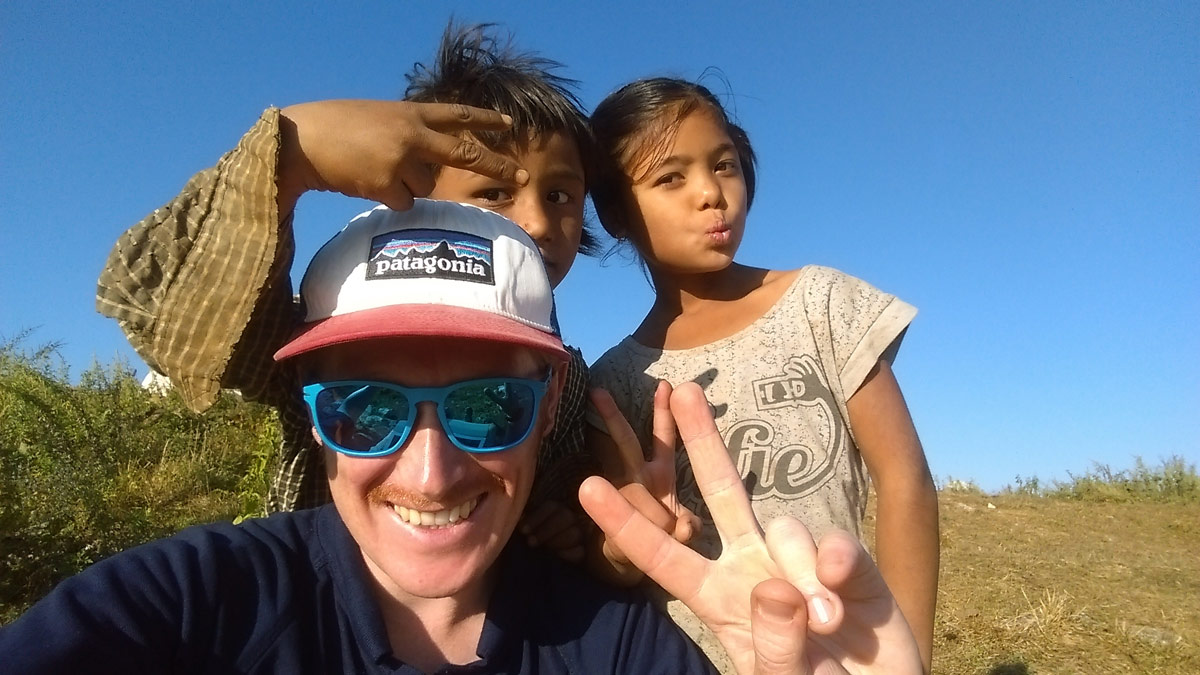
Brought to you by Flybubble
Want to see more? There’s no better way to support our efforts than buying from us. We’ll ensure you get great service! Choose from our great range AND enable us to produce more videos and articles to benefit the freeflight community.
Check out some more photos from the trip.
[gallery ids="32979,32976,32975,32972,32971,32970,32969,32967,32966,32965,32964,32963,32962,32961,32960,32959,32957,32956,32955,32954,32953,32952,32950,32949,32948,32947,32946,32945,32944,32942,32941,32940,32939,32938,32937,32936"]

